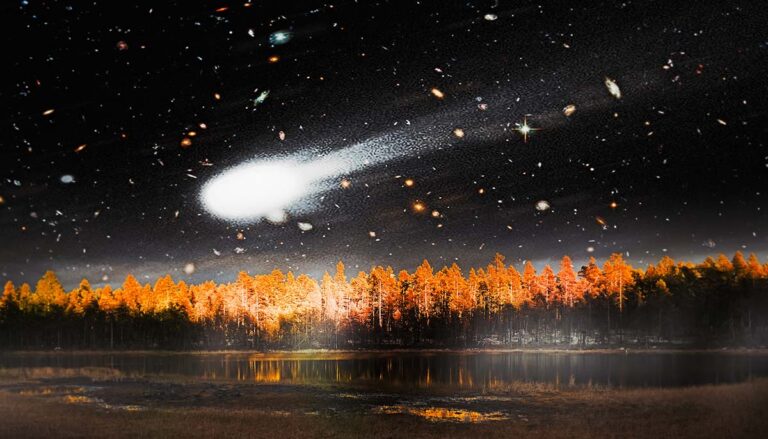A massive and mysterious boom shook up both residents and wildlife in South Texas, sending birds scattering in the region. The event triggered a NWS lightning mapper, and now NASA says a half-ton meteorite crashed in the Lone Star State.
Half-ton meteorite crashes to earth in South Texas
Residents of South Texas were baffled after a mysterious boom shook up the area, startling wildlife and scattering birds. Now, NASA has an explanation: a half-ton meteorite crashed to earth.
NASA says the massive boom that shook up residents and wildlife in South Texas on Wednesday was the result of a nearly 1,000-pound meteor that measured two feet wide, Fox News reported.
The meteor broke apart as it fell through Earth’s atmosphere and plummeted down near McAllen, Texas, around 5:28 PM, according to NASA. In its report on the incident, NASA posted a map showing an area where pieces of the meteor likely landed, the New York Post reported.
“Although meteorites tend to hit Earth’s atmosphere at high speeds, they slow as they travel through the atmosphere, breaking into small fragments before hitting the ground. Meteorites cool rapidly and generally are not a risk to the public,” NASA said in a statement.
“The meteor seen in the skies above McAllen is a reminder of the need for NASA and other organizations to increase our understanding and protection of Earth, to combine scientific and engineering expertise to advance human space exploration, to integrate terrestrial and planetary research for furthering our understanding of the solar system, and to promote successful space missions by mitigating risk,” NASA added.
Many Americans remain frightened after the US shot down a suspected Chinese surveillance balloon after it passed over the continental US earlier this month, as well as US fighter jets shooting two other objects down a few days later, CNN reported.
NWS captures meteor on space satellite lightning mapper
The National Weather Service (NWS) also reported capturing the flash from the meteor on a Geostationary Lightning Mapper (GLM) right before the 5:28 p.m. impact.
The NWS lightning Mapper satellite measures lightning from space. The agency noted that there was no thunderstorm activity in the area at the time the meteor crashed.
“GLM detected a signal at 5:23 PM with no storms around,” the NWS tweeted.
Two pilots flying near Houston reported seeing an apparent meteorite, Hidalgo County Sheriff Eddie Guerra said, citing a report he received from air traffic controllers in Houston and the FBI.





